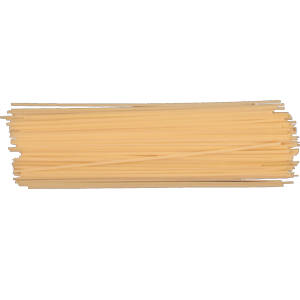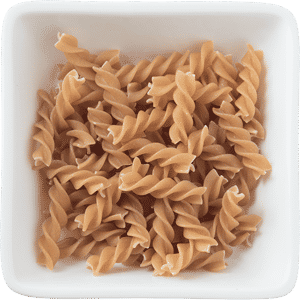What Are the Different Types of Pasta and Their Uses?
Pasta 101
The world of pasta shapes is vast and variable. Short, long, wide, narrow, hollow, filled, corkscrew, ear-shaped––there are shapes for every type of pasta recipe. And while their looks matter, choosing the best pasta shape is about more than just looking great on a plate. Certain shapes are better at clinging to creamy sauces, while others add texture to soups and salads.
That said, there aren’t specific rules that dictate which pasta shapes you should or shouldn’t use. Feel free to use what you have on hand, especially if you have something that’s similar to what’s recommended. “Pasta is not neurotic—it’s easygoing and very forgiving,” says Odette Williams, author of Simple Pasta: Pasta Made Easy. Life Made Better. “Often I’ll just use what I have in the pantry because I tend to have at least five types on hand. Then it comes down to what I’m craving or the pasta dish I’m making. I try to match it with the sauce.”
How Many Types of Pasta Are There?

About Spaghetti: Thicker than angel hair and thinner than bucatini, spaghetti is the Goldilocks of cylindrical pastas. Spaghetti and meatballs are a classic combo, but this versatile shape can be paired with a variety of sauces, veggies, and proteins.

About Penne: Its hollow shape and ridges make penne ideal for catching sauces that are on the thicker side. “For creamy pastas, like mac and cheese or vodka sauce, I want tubes like penne, mezzi rigatoni, or garganelli to slurp up the sauciness,” Williams says.

About Ravioli: These delightful pasta envelopes are often filled with meat, seafood, vegetables, or cheese. The characteristic frilled edge adds a bit of pizzazz, and the overall size can vary depending on who’s making it.

About Cavatappi: Cavatappi is like macaroni, but twisted into a corkscrewlike shape—in fact, “cavatappi” is Italian for “corkscrew.” Its ridges grab onto sauces both thick and thin, and it’s also well-suited for salads and baked casseroles.

About Gnocchi: These potato dumplings (though there are potato-free versions) are soft and fluffy on the inside and crispy on the outside if you’re pan-frying them in browned butter (yum). “For slow-cooked winter ragùs, I go for potato gnocchi or long, wide ribbons of pappardelle,” Williams says.

About Linguine: Italian for “little tongues,” linguine’s name is a nod to its elliptical shape. It’s wider than spaghetti but narrower than fettuccine. “For a summertime vongole (clam pasta), I go for simple, elegant classics like linguine or spaghetti to let the clams be the star and not greedily absorb all the briny goodness,” Williams says.

About Gemelli: While gemelli (Italian for “twins”) might look like it’s made of two pasta strands, it’s really just one long strand folded in half, then twisted together. The resulting twists and crevices are perfect for catching sauces or even bits of ground meat if you’re enjoying some bolognese.

About Orecchiette: “Orecchiette” is Italian for “little ears,” which is the perfect way to describe this cute little pasta shape. While traditionally served with a simple tomato sauce, orecchiette holds up to chunkier sauces and other ingredients as well. “If the sauce is chunky, you want a pasta with nooks and crannies like orecchiette or fusilli for it to get cradled in,” Williams says.

About Orzo: One of the smallest pasta shapes, orzo might look like a grain—but it’s most definitely pasta. “For soups and pasta salads, it’s all about the smaller pastas, like orzo or ditalini,” Williams says.

About Rigatoni: The width and the ridged exterior of rigatoni are ideal for chunky sauces, as well as pasta dishes with meat and veggies. Rigatoni is also popular for baked pasta dishes, and it’s great at capturing grated cheese.

About Fusilli: Commonly confused with rotini, which is more corkscrewlike than the spring-shaped fusilli, this noodle traps sauces—which also makes it a great choice for chilled pasta salads.

About Tortelloni: Another stuffed pasta, tortelloni are usually vegetarian, filled with herbed ricotta or even pumpkin puree. Don’t confuse it with the more petite tortellini, which is usually stuffed with meat and served in a broth.

About Tagliatelle: Usually made with an egg-based dough, tagliatelle is wider than fettuccine but narrower than lasagna. Its classic pairing in its native Bologna is a hearty ragù.
